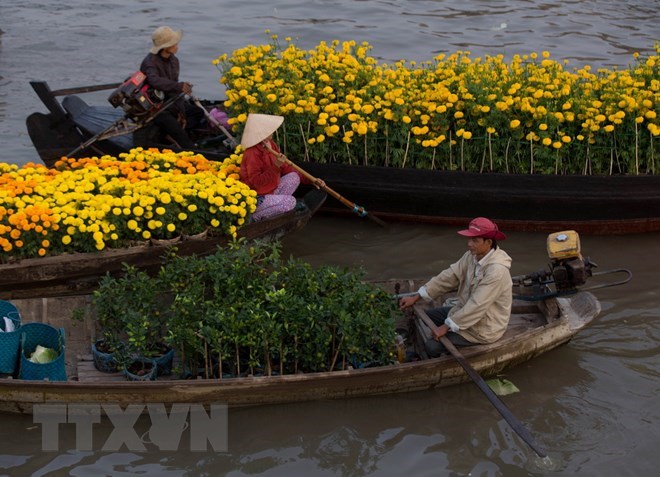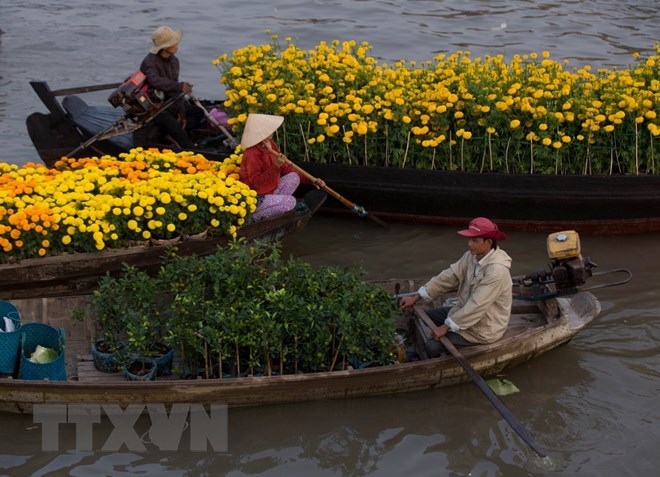



Cai Rang floating market in Can Tho city (Photo: VNA)
According to Director of the municipal Department of Culture,
Sports, and Tourism Tran Viet Phuong, Can Tho has posted a growth rate of 20
percent in tourist arrivals and 28 percent in tourism revenue each year over
the last three consecutive years.
The city is expected to welcome around 8 million visitors this year, up 70.2
percent from 4.7 million from 2015. Revenue from tourism is estimated to reach
3.5 trillion VND (151 million USD).
The city has diversified its tours, tourism products, and services, as well as
improved its infrastructure for the industry.
The city had an additional 26 hotels this year compared to 2016, including
eight rated from four- to five-stars. A variety of national and international
cultural events and festivals have been organised in the city, attracting large
numbers of visitors.
Furthermore, the city has put more focus on enhancing the quality of local
tourism workers, with some 20 training courses opened for over 800 people in
the industry, bringing its proportion of trained workers up to 52 percent.
Phuong also outlined several problems with the local tourism sector that have
hindered the city’s efforts to bring its potential into full play. He believed
that local tourism products have lacked originality and do not offer the same
attraction, making them less competitive compared to those of other regional
provinces. Meanwhile the city also has a lack of capable personnel and
effective cooperation to carry out tourism promotion activities.
To solve these issues, Can Tho should give priority to developing signature
tourism products, such as meetings, incentives, conferences, and exhibitions
(MICE) tours; community-based tours; and tours to explore local cultural and
historical heritages.
The city plans to build and renovate more hotels, restaurants, shopping malls,
supermarkets, and other features to better serve MICE tours and at the same
time, expand the annual southern traditional cake festival.
It is also inviting investment in eight key tourism projects and developing
more river tours that connect to Ho Chi Minh City, Phu Quoc, Con Dao, Ca Mau,
and Cambodia.
Can Tho expects that airlines will soon launch new services connecting the city
with Hai Phong, Vinh cities and Thailand’s Bangkok in the near future.
At the heart of the Mekong Delta, Can Tho is designed to be one of seven
tourism hubs of Vietnam under the national master plan for tourism development
until 2020 with a vision to 2030.
Major tourist destinations of Can Tho include Cai Rang floating market, Ninh
Kieu bridge, Ninh Kieu port, Truc Lam Zen Pagoda, My Khanh eco-tourism village,
Lung Cot Cau and Lung Tram tourist areas, and Mien Tay bird park.
Source: VNA